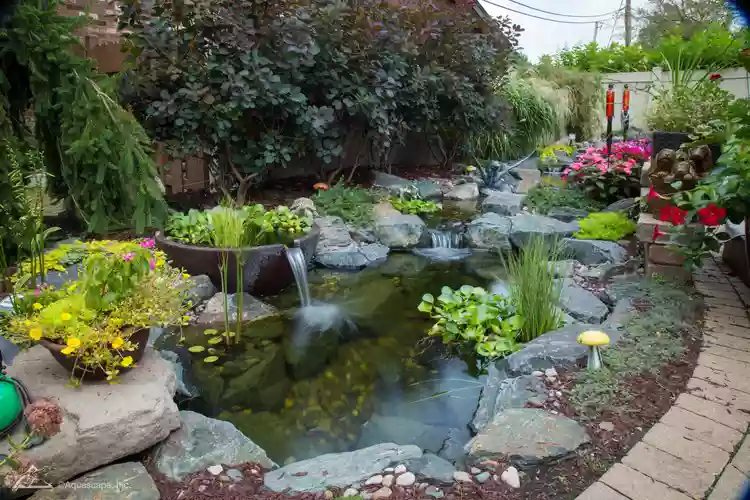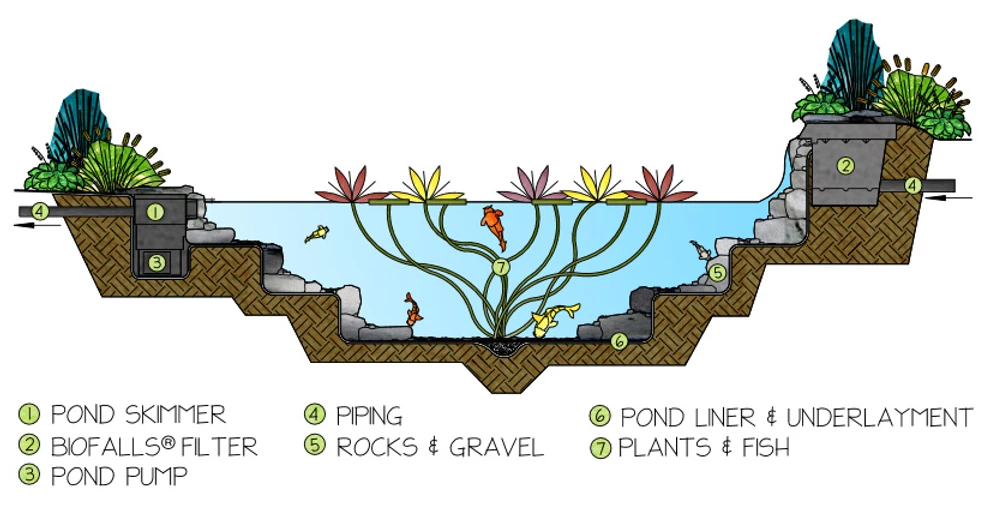Ecosystem ponds and how they work
What makes an ecosystem pond different from a pool? Is one pond better than another? Here we’ll explore the terms and definitions of this style of pond, and how it works.

An ecosystem pond is a pond or stream designed to function following the patterns of nature. No harmful chemicals, no complex filter system, no chlorine. These natural beauties are created to embrace and enhance life on every level, from the graceful plants that add color around and in the water to the beautiful fish that swim in the shallows and the birds that bathe at the water’s edge. Welcome to the pond life.
These ponds all follow similar construction theory, but they can be designed to fit almost any backyard size or area. Even a small area, indoor or outdoor, can be transformed with the beauty and life of an ecosystem pond.
But how is this done? A freshwater ecosystem has almost endless players that contribute to the symphony, but we’ll look at a few of the key players that are almost universal, from the smallest patio bowl pond to the endless Everglades.

Filtration System
Designing and implementing an efficient circulation system ensures that the water is oxygenated and pond debris (including leaves, larvae, floating algae, and anything else that is blown in) will be swept from the pond’s surface and deposited into an easily emptied skimmer basket. Through various forms of mechanical and biological filtration, the aquatic circle of life turns repeatedly in your pond.
Pond plants
Algae are plants, and all aquatic plants feed off the same nutrients in the water. The more plants you add to your pond, the more the algae will be starved from its food source. Algae growth will be minimized naturally and effortlessly.
A wide variety of aquatic plants are available for your pond. From waterlilies and lotus to marginal plants such as marsh marigold and horsetail, you will never tire of the options available to you.
Fish
Fish fulfil their role in the ecosystem by eating algae. Presuming they’re not overfed, koi will graze on the algae, effectively reducing its growth. Like plants, a variety of pond fish are available for you to introduce to your pond. Large, colourful koi to gold fish and beyond! Fish are a delightful addition to any size water garden.
Rocks and Gravel
Like aquatic plants, the bacteria that live on the rocks and gravel in the pond feed on excess nutrients in the water, reducing the algae by starving it even further. The rocks and gravel not only hide the liner and create a natural-looking setting, but also provide a home for beneficial bacteria. Plant debris, fish waste, decaying organic matter, excess nutrients, or anything else that falls to the bottom of the pond will rest on top of the rocks and gravel. The bacteria living on the rocks and gravel will then go to work, breaking down the waste and debris, cleaning and clearing the water. Mother Nature’s circle of life is amazing, don’t you agree?
Finally… Patience!
It takes between two and six weeks for the bacteria to colonize and actually begin to do their job. Creating a balanced ecosystem does not happen overnight! Like fine wine, ponds mature with age, so do not be surprised or concerned if a new pond begins to grow some algae. Once the plants, fish, and bacteria are established, the algae will decrease, as will the amount of maintenance on the pond.
